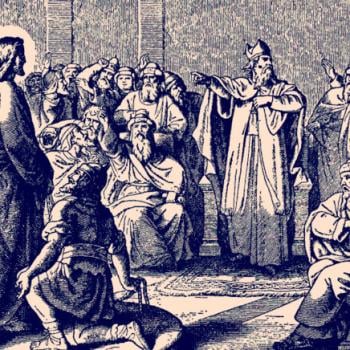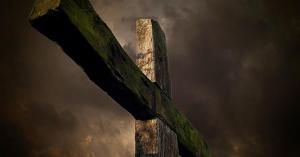The Bible contains everything we need know about how to be saved but here are some things that you might not know about the Word of God. Here is a survey of the Old and New Testament books in the Bible.
An Introduction to the Bible
The Bible is the greatest love letter ever written that is hardly ever read. Even though it’s the bestselling book of all time, many people just take it for granted and it sits on the shelf gathering dust. From Genesis to Revelation, God depicts the story of the redemption of mankind, his plan and purpose for redeeming mankind, restoring the separation that our sin had created, and how we might inherit eternal life through repentance and faith in Christ.
Introduction to the Old Testament
The Old Testament’s most revealing story of the redemptive plan of mankind is hinted at even in the beginning, in the Book of Genesis, because right after the fall of mankind, we are given hope for a coming Redeemer (Gen 3:15). It takes us from the fall of mankind and the entrance of sin into the world to the only solution for sins (for those who have faith, like Abraham did). It reveals how God called Abraham out of his nation to create a new nation that God would call His own people. When Moses called Israel out of Egypt, it symbolized the Christian coming out of sin and how we can establish a personal relationship with God. Moses (Duet 18:15-19) and the prophets (Isaiah 53) foretold of a day when the Messiah would come to die for the sins of the people, paying in His own blood the cost of restoring a fallen mankind and enabling them to have their sins forgiven and the relationship that God originally had with Adam and Eve in the Garden of Eden restored.
The examples of the Patriarchs, the kings, and the nation of Israel were recorded for our sake. In the pages of the Old Testament God reveals that He also extends grace to those nations outside of Israel for it is God’s deep desire to save as many that would trust in Him as possible. The Old Testament is divided into different sections and interestingly, the 39 books of the Old Testament are divided into their respective order as they are from start to finish, in different sections. In other words, the Law was given first, from Genesis to Deuteronomy, and the remainder of the books are in sequential order in the place where the different categories rest: the Law, history, wisdom/poetry, Major Prophets and the Minor Prophets. The Minor Prophets are called “minor” only due to their size and not due to their being any less significant than the Major Prophets. The order in which they come are not necessarily the order in which they were written. For example, the Book of Job is believed to be the oldest and perhaps the first book of the Old Testament ever written.
The Law
Genesis
Exodus
Leviticus
Numbers
Deuteronomy
The History
Joshua
Judges
Ruth
1 Samuel
2 Samuel
1 Kings
2 Kings
1 Chronicles
2 Chronicles
Ezra
Nehemiah
Esther
Wisdom/Poetry
Job
Psalms
Proverbs
Ecclesiastes
Song of Solomon
Major Prophets
Isaiah
Jeremiah
Lamentations
Ezekiel
Daniel
Minor Prophets
Hosea
Joel
Amos
Obadiah
Jonah
Micah
Nahum
Habakkuk
Zephaniah
Haggai
Zechariah
Malachi
An Introduction to the New Testament
The Old Testament Book of Malachi is the back of the door to the Old Testament and the Old Covenant but the door that opens into the New Testament is the hinge on which the New Covenant begins and interestingly, it begins with Matthew who writes specifically to the Jews. Matthew opens the New Testament and his gospel with the history or the genealogy of Jesus going back through David, Jesse, Boaz, Jacob, Isaac, and finally to Abraham and reveals that the Messiah is to come out of the Tribe of Judah. If that were not enough for the Jews, Matthew also gives the reader the most significant number of Old Testament prophesies that were fulfilled in Jesus Christ’s coming. He includes such fulfilled prophecies as written by Zechariah, Psalms (some of the Psalms were prophetic), Jeremiah, Isaiah, Micah, Hosea, and Malachi. In Jesus Christ’s fulfillment of these prophecies the Redeemer is revealed. Actually the Savior was introduced in the Old Testament first, in what is called the protoevangelium, which is the first annunciation of the gospel, where Satan was to bruise Christ’s heal but Christ will crush Satan’s head (mentioned in Gen 3:15). The New Covenant will be established and make possible the redemption of all those who will repent and trust in the Savior.
Once more we see a division of the books and as in the Old Testament, the 29 books of the New Testament are divided in the order in which they come and like the Old Testament, they come in the order of their respective categories in the same order in which they are placed; that is, the gospels come first, then there is the brief history of the church in Acts, next Paul’s epistles (or letters), then the general epistles, and finally the prophetic or apocalyptic Book of Revelation where the history of the redemptive plan of God comes to its final fulfillment in human history.
The New Testament Books
The Gospels
Matthew
Mark
Luke
John
History
Acts (of the church or the Holy Spirit)
Paul’s Epistles (letters)
Romans
1 Corinthians
2 Corinthians
Galatians
Ephesians
Philippians
Colossians
1 Thessalonians
2 Thessalonians
1 Timothy
2 Timothy
Titus
Philemon
General Epistles
Hebrews
James
1 Peter
2 Peter
1 John
2 John
3 John
Jude
Prophetic/Apocalyptic (or the revealing)
Revelation
Conclusion
Everything we need to know about repentance and faith in Christ (Rom 10:9-13), how to have our sins forgiven (Acts 4:12), and to be seen as having Jesus’ own righteousness (2 Cor 5:21) can be found in the New Testament but even those who lived and died before Christ were saved by faith (Heb 11). The Bible means nothing if it is not read and then believed and that belief means that a person needs to understand that if they have never repented, confessed their sins, humbled themselves before God and then put their trust in Christ they still have the wrath of God abiding on them (John 3:36). God is furious at the sinner and that wrath will be placed on them on the Day of Judgment (Rev 20:11-15). Either you will pay for your own sins (and it will take all of eternity) or you can choose to have Christ pay for them which was done at Calvary (John 3:16-17). If you are not saved as you are reading this, you stand condemned (John 3:18). Change that today and you will be saved (Rom 10:9-13). Today, we have the sufficiency of the Scriptures and no new revelation from God is necessary than that which already appears in the 66 books of the Bible. You can be saved today (2 Cor 6:2). Now that you know, what are you going to do about it?
Another Reading on Patheos to Check Out: What Did Jesus Really Look Like: A Look at the Bible Facts
 Article by Jack Wellman
Article by Jack Wellman
Jack Wellman is Pastor of the Mulvane Brethren church in Mulvane Kansas. Jack is also the Senior Writer at What Christians Want To Know whose mission is to equip, encourage, and energize Christians and to address questions about the believer’s daily walk with God and the Bible. You can follow Jack on Google Plus or check out his book Blind Chance or Intelligent Design available on Amazon















